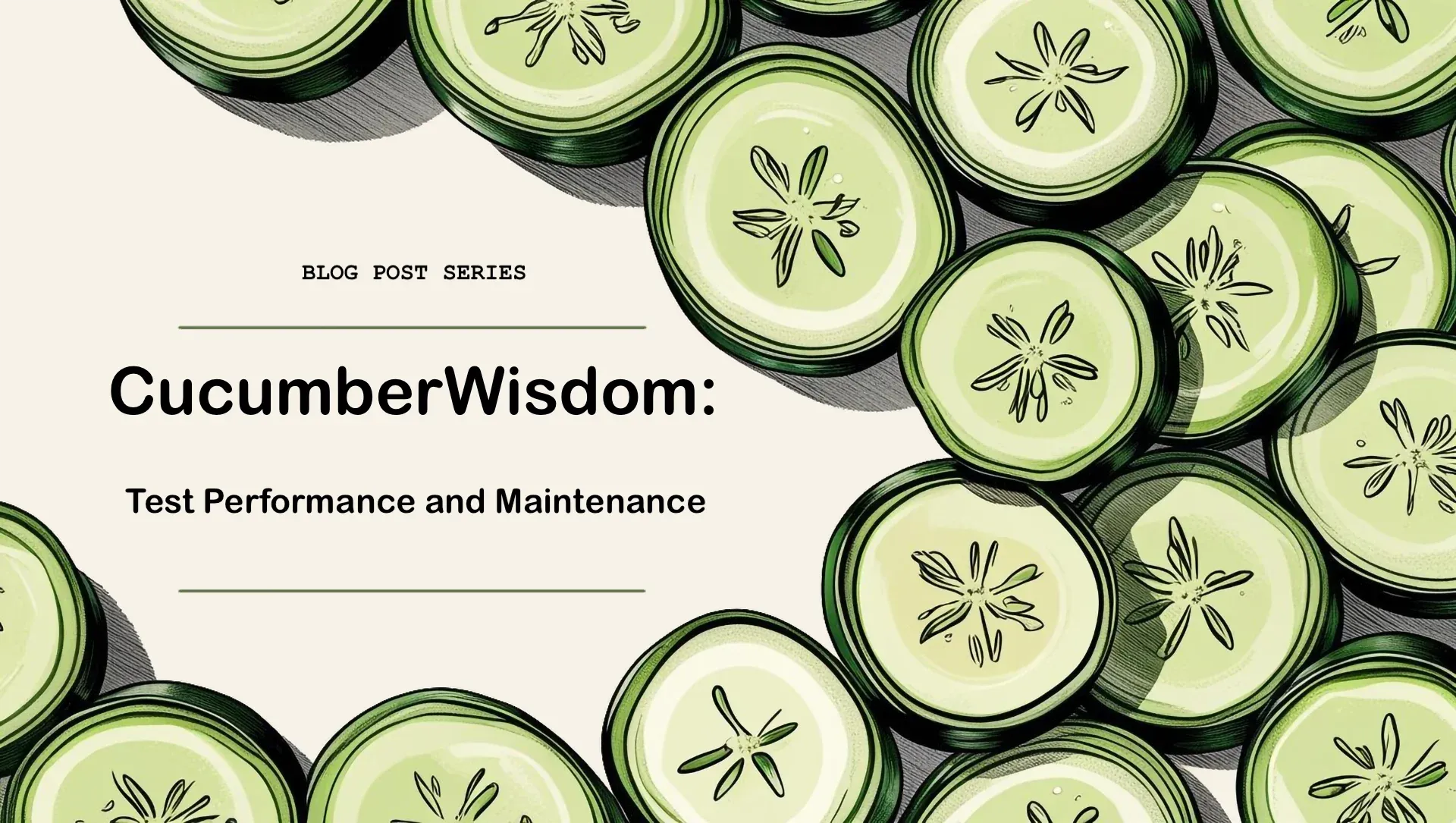Cucumber Wisdom: Test Performance and Maintenance
Long test runs slow down teams and hide real issues. Learn how to monitor, optimize, and maintain your Cucumber test suite so it stays fast, reliable, and useful.

The Hidden Cost of Slow Tests
At first, a few extra seconds in your Cucumber suite might not seem like much. But those seconds add up.
“Each time you add a new scenario to your test suite, you're adding a few seconds to the total test runtime.”
It’s a small tax that keeps growing. And before you realize it, your suite takes half an hour — or worse, an hour — to run.
“A long test run creeps up on you... Before you know it, your features are taking more than an hour or even longer.”
That creeping slowness has a real cost: developers start skipping runs, feedback loops stretch, and the trust in automated tests slowly fades.
Why Performance Matters
Fast tests keep development flow alive. They support experimentation and help teams deliver with confidence.
When tests drag on, even a minor fix feels like a chore. And when feedback is delayed, bugs make it further downstream — where they’re harder and more expensive to fix.
Test performance isn’t just about speed. It’s about maintaining momentum, trust, and collaboration across the team.
Keeping Your Test Suite Healthy
1. Measure and Monitor
Start by tracking how long your suite takes to run. Many teams forget this until it’s too late. Add timing logs or dashboards that make performance visible.
2. Review Regularly
Every few sprints, revisit your scenarios. Are they still valuable? Are they overlapping? Trimming or refactoring tests can save minutes — and clarity.
3. Parallelize When Possible
Modern CI tools and test runners support parallel execution. Splitting long suites into smaller chunks can drastically cut total runtime.
4. Balance Depth and Breadth
Not every scenario needs to run at the highest integration level. Move repetitive or low-risk checks to faster unit or API tests.
5. Automate Maintenance
Use scripts or reporting tools to detect flaky tests, outdated steps, or long-running features. Maintenance is easier when it’s part of your workflow, not an afterthought.
When Tests Become Living Documentation
Efficient test suites don’t just save time — they tell a story you can actually read.
A well-maintained suite gives teams confidence to change the system without fear, because tests express the intent behind behavior, not just the outcome.
That’s what keeps Cucumber valuable: it remains a shared artifact of understanding, not a burden to manage.
Final Thoughts
A fast, healthy test suite is a quiet enabler of good software.
It supports collaboration, reduces friction, and turns feedback into momentum.
When your tests are slow or neglected, they stop helping the team communicate — and that’s when you lose one of the biggest benefits of Behavior-Driven Development.
Keep them lean. Keep them relevant. Keep them alive.
Acknowledgements
This post is inspired by insights from The Cucumber for Java Book by Seb Rose, Matt Wynne, and Aslak Hellesøy — a foundational guide for teams practicing Cucumber and Behavior-Driven Development (BDD).
If you haven’t read it yet, it’s absolutely worth exploring.
